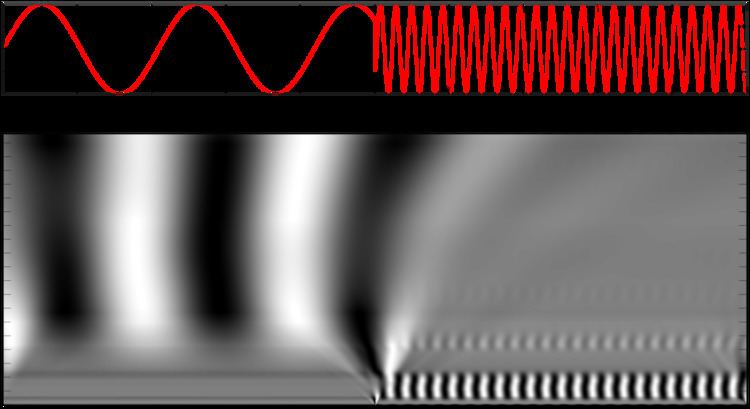 | ||
In mathematics, a continuous wavelet transform (CWT) is used to divide a continuous-time function into wavelets. Unlike Fourier transform, the continuous wavelet transform possesses the ability to construct a time-frequency representation of a signal that offers very good time and frequency localization. The continuous wavelet transform of a function
Contents
where
is admissible constant, where hat means Fourier transform operator. Sometimes,
Traditionally, this constant is called wavelet admissible constant. A wavelet whose admissible constant satisfies
is called an admissible wavelet. An admissible wavelet implies that
This inverse transform suggests that a wavelet should be defined as
where
Scale factor
The scale factor
Continuous wavelet transform properties
In definition, the continuous wavelet transform is a convolution of the input data sequence with a set of functions generated by the mother wavelet. The convolution can be computed by using a Fast Fourier Transform (FFT) algorithm. Normally, the output
Applications of the wavelet transform
One of the most popular applications of wavelet transform is image compression. The advantage of using wavelet-based coding in image compression is that it provides significant improvements in picture quality at higher compression ratios over conventional techniques. Since wavelet transform has the ability to decompose complex information and patterns into elementary forms, it is commonly used in acoustics processing and pattern recognition. Moreover, wavelet transforms can be applied to the following scientific research areas: edge and corner detection, partial differential equation solving, transient detection, filter design, electrocardiogram (ECG) analysis, texture analysis, business information analysis and gait analysis.
Continuous Wavelet Transform (CWT) is very efficient in determining the damping ratio of oscillating signals (e.g. identification of damping in dynamic systems). CWT is also very resistant to the noise in the signal.
